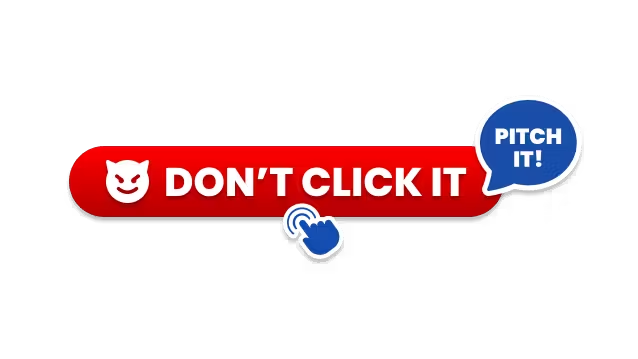Introduction to NYT crossword
Welcome to the captivating universe of the New York Times crossword puzzle! Where a dot may be a date nyt crossword? Whether you’re a seasoned solver or simply plunging your toe into the realm of wordplay, there’s something undeniably addicting about these brain bending matrices. From those tantalizing hints that send your brain into overdrive to that sweet feeling of accomplishment when you finally crack the code, it’s an excursion loaded up with fervor and win.
In any case, what separates the NYT crossword from different riddles? And Where a dot may be a date nyt crossword? All things considered, dear reader, prepare for a fascinating exploration into where a dot may be a date in this notable crossword series. Grab your pencil (or fire up your favorite digital tackling platform) and how about we make a plunge!
The history and popularity of NYT crossword
The New York Times crossword puzzle has a rich and celebrated history that spans north of seven decades. Created by journalist Arthur Wynne in 1913, the primary crossword was distributed in the Sunday release of the New York World newspaper. Much to anyone’s dismay at the time that this modest word game could proceed to become a global peculiarity?
Throughout the long term, the NYT crossword puzzle has captured the hearts and brains of millions of individuals around the world. It has become a notable part of American culture, featured unmistakably in motion pictures and Programs as an image of intellectual ability. From its beginning, it has attracted a dedicated following who eagerly await each new riddle with anticipation.
What separates NYT crossword puzzles from others is their degree of trouble and intricacy. They are known for challenging even seasoned scribes, pushing them to expand their vocabulary and exercise their critical thinking abilities. Each lattice is carefully crafted with signs that range from straightforward definitions to smart wordplay and jokes.
One key aspect that makes tackling these riddles so fascinating is the means by which dates become an integral factor. In many NYT crosswords, certain squares are loaded up with dots instead of letters – indicating that those spaces relate to explicit dates or occasions ever. Tackling these date-based hints adds another layer of challenge to an already intricate riddle.
Whether you’re a seasoned puzzler or simply starting out, there’s something undeniably satisfying about finishing a troublesome NYT crossword puzzle. The feeling of accomplishment when all those interlocking words finally fall into place is genuinely exhilarating.
So next time you get your pencil or open your favorite crossword app, remember: where a dot may be a date in a NYT crossword could also be your pass to long periods of brain-teasing tomfoolery!
Solving the puzzle: Tips and tricks
Tackling a crossword puzzle can be both invigorating and challenging. It requires a combination of rationale, information, and a touch of creativity. On the off chance that you’re new to NYT crossword puzzles or only searching for certain tips to further develop your settling abilities, we take care of you!
Start with the signs that, most importantly, are easiest for you. This will give you some initial force and assist with building certainty as you tackle the harder pieces of information later on. Try not to get discouraged in the event that certain segments appear to be unimaginable from the outset – take a stage back and approach them from an alternate angle.
One helpful method is to search for patterns in the framework. Frequently, there will be repeating topics or well known phrases that can give clues to different answers. Pay attention to hint phrasing as well – some of the time wordplay or twofold meanings can lead you in the correct heading.
Go ahead and use aids like dictionaries or online databases when stuck on an unfamiliar word. Crossword puzzles are all about expanding your vocabulary and learning new things along the way.
Another strategy is to fill in any letters that you are absolutely certain of before continuing on toward additional uncertain ones. Gradually working out parts of the lattice can assist with revealing associations between already subtle hints.
Remember, practice makes great! The more crosswords you address, the better you’ll become at perceiving normal patterns and hint types.
So grab a pen (or go digital) and jump into your next NYT crossword puzzle adventure! With these tips and deceives at your disposal, those apparently insurmountable lattices will before long become conquerable challenges waiting to be addressed!
The role of dates in NYT crossword puzzles
The job of dates in NYT crossword puzzles adds an extra layer of challenge and interest to the tackling experience. Each puzzle typically features a subject, and frequently, these topics are based on unambiguous dates or historical occasions.
While experiencing a hint that incorporates a date, taking into account its relevance inside the riddle’s theme is important. The date may allude to a significant occasion, like a famous individual’s introduction to the world or an important historical achievement. By recognizing the significance of the date, solvers can narrow down potential answers and make progress towards finishing the framework.
Be that as it may, dates can also be utilized as confusion in crossword signs. At times, constructors play with words by utilizing homophones or wordplay including numbers to lead solvers astray. It requires careful attention and creative reasoning to unravel these cunningly crafted pieces of information.
Tackling crossword puzzles with date-related pieces of information tests your insight into history as well as challenges your critical thinking abilities. It encourages you to think critically and interface various snippets of information together.
So next time you see a sign that remembers a date for a NYT crossword puzzle, embrace the challenge! Plunge into research if necessary, rack your brain for facts and associations – because where there’s a dot addressing a date in this puzzle world, there’s always a chance for disclosure and satisfaction when you finally crack it!
Conclusion: The satisfaction of completing a challenging puzzle
Tackling crossword riddles can be an unbelievably satisfying and satisfying experience. The sensation of accomplishment comes from cracking the code, tracking down those subtle words, and filling in all the squares. And with regards to the New York Times crossword, that pride is considerably better.
The NYT crossword has been captivating riddle enthusiasts for quite a long time with its sharp hints and interesting subjects. From its unassuming beginnings to becoming a cultural symbol, this puzzle has endured for the long haul and keeps on challenging individuals’ brains consistently.
However, what separates the NYT crossword from different riddles is its incorporation of dates as part of the tackling system. Each square addresses a letter, yet in some cases it also means a particular date or year ever. This adds another layer of intricacy and interest to an already intricate network.
As solvers dive into each hint, they may experience references to historical occasions or notable figures attached to particular dates. A dot in one square could address a month or day, leading puzzlers on an excursion through time as they unravel these associations. It’s like venturing into a time machine while sharpening your vocabulary abilities!
The beauty lies in translating these date-related signs as well as in finding how they meet with different words inside the lattice. It requires careful idea and attention to detail as you navigate through various aspects – language, history, culture – all interweaved inside this compact universe.
Where a dot may be a date nyt crossword For More information : Businesstaken


